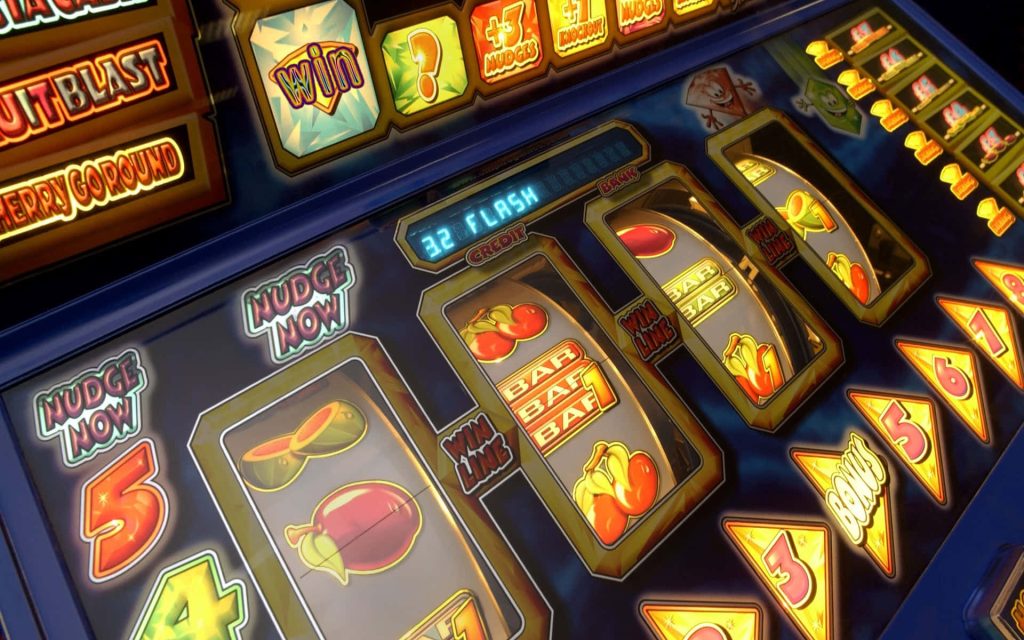Slot machines have long been a staple of casinos and gambling establishments around the world. With their bright lights, enticing sounds, and promise of winning big, they draw in millions of players each year. But have you ever wondered what makes these machines so captivating? It’s not just luck; there’s a well-thought-out psychology behind slot machine design that keeps players spinning the reels. In this blog post, we’ll delve into the intricacies of slot machine design and explore the techniques that keep players coming back for more.
The Allure of Random Rewards

One of the most fundamental psychological principles at play in slot machine design is the concept of random reinforcement. Unlike games of skill, such as poker or blackjack, where a player’s decisions can influence the outcome, slot machines rely entirely on chance. This unpredictability is strangely enticing to the human brain. When players win, they experience a rush of excitement and pleasure, even if they know it’s purely luck. This intermittent reinforcement keeps players engaged, as they chase the elusive thrill of a big win.
Visual and Auditory Stimulation
Slot machines are a feast for the senses. The colorful graphics, flashing lights, and vibrant animations are designed to capture and hold players’ attention. Every spin is accompanied by a symphony of sounds, from the clinking of coins to the triumphant jingles of a win. These sensory stimuli create an immersive experience that makes players feel like they are in the midst of a thrilling adventure. The combination of visuals and sounds is carefully orchestrated to trigger positive emotional responses, making players associate the game with excitement and fun.
Near Misses and “Almost” Wins
One devious tactic employed by slot machine designers is the use of near misses. These are situations where the symbols on the reels come tantalizingly close to forming a winning combination but fall just short. The brain interprets these near misses as almost-wins, tricking players into thinking they were just a fraction away from a massive jackpot. This near-win phenomenon can be highly motivating, encouraging players to keep spinning in the hopes of hitting that elusive jackpot.
The Gambler’s Fallacy

Another psychological trap that slot machines exploit is the gambler’s fallacy. This cognitive bias leads players to believe that if they’ve been losing for a while, they’re due for a win soon. Slot machines are designed to create the illusion of streaks and patterns, even though each spin is independent and random. Players often fall into the trap of thinking, “I’ve lost five times in a row, so I must be due for a win,” which keeps them playing far longer than they initially intended.
Reward Systems and Loyalty Programs
Casinos understand the value of rewarding loyalty, and they use various reward systems and loyalty programs to keep players engaged. Many slot machines are part of a networked system that offers progressive jackpots, where a small percentage of each bet goes into a growing prize pool. This tantalizingly large jackpot serves as a constant incentive for players to keep spinning. Additionally, casinos offer player rewards such as free spins, complimentary drinks, or even room upgrades to keep players coming back for more. Slot machines are more than just games of chance; they are finely tuned psychological instruments designed to keep players spinning the reels. Through techniques like random reinforcement, sensory stimulation, near misses, and the exploitation of cognitive biases, slot machine designers create an experience that is both captivating and addictive. Understanding the psychology behind slot machine design can help players make more informed decisions and enjoy these games responsibly. So, the next time you sit down at a slot machine, remember that the odds may be against you, but the psychology of the machine is working hard to keep you spinning.

Leave a Reply